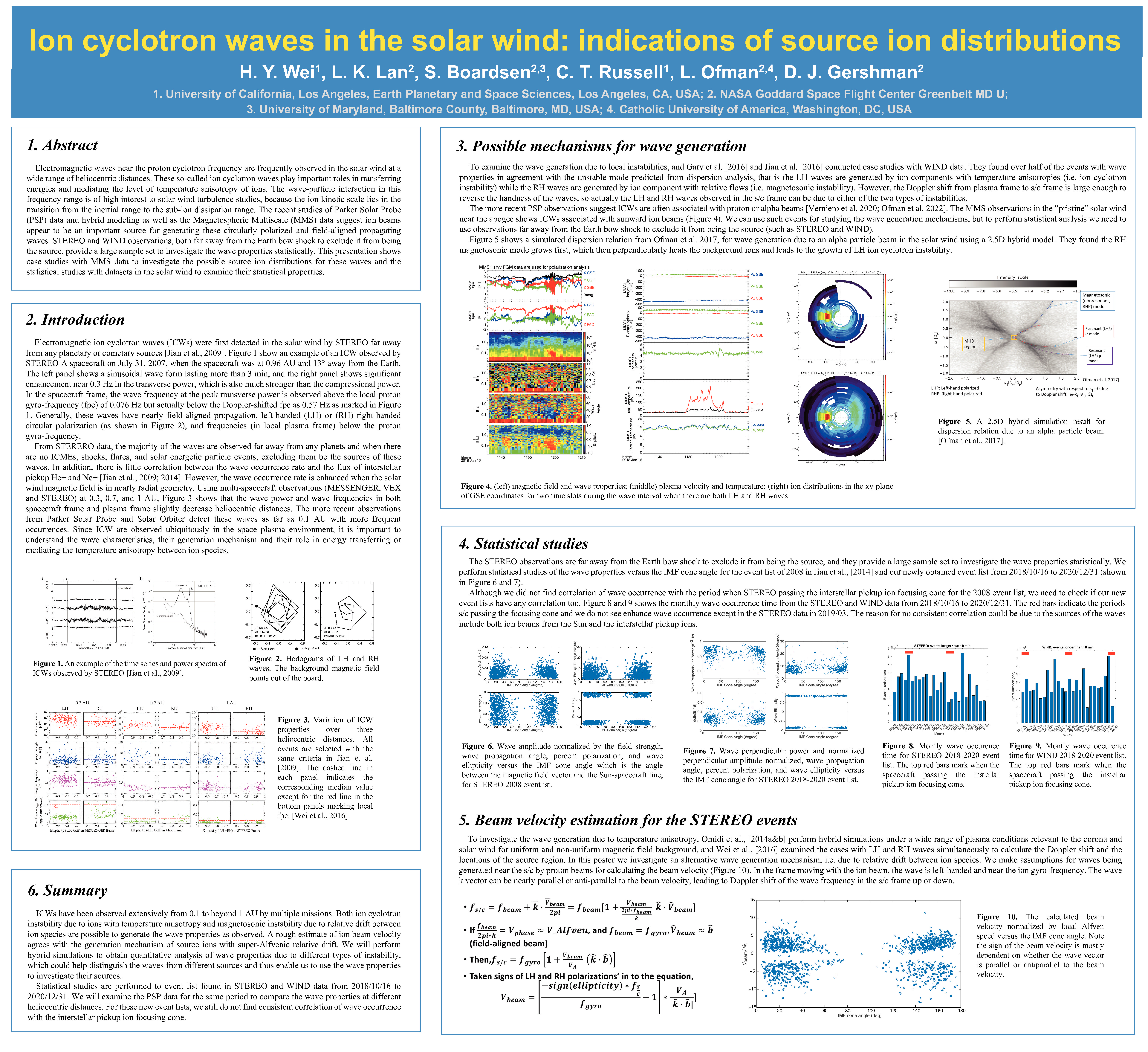Authors: H. Y. Wei (Dept. of Earth, Planetary and Space Sciences, University of California, Los Angeles, CA, USA), L. K. Jian (NASA Goddard Space Flight Center, Greenbelt, MD, USA), S. Boardsen (University of Maryland, Baltimore County, Baltimore, MD, USA), C. T. Russell (Dept. of Earth, Planetary and Space Sciences, University of California, Los Angeles, CA, USA), L. Ofman (Catholic University of America, Washington, DC, USA), D. J. Gershman (NASA Goddard Space Flight Center, Greenbelt, MD, USA)
Electromagnetic waves near the proton cyclotron frequency are frequently observed in the solar wind at a wide range of heliocentric distances. These so-called ion cyclotron waves play essential roles in transferring energies and mediating the level of temperature anisotropy of ions. The wave-particle interaction in this frequency range is of high interest to solar wind turbulence studies because the ion kinetic scale lies in the transition from the inertial range to the sub-ion dissipation range. The recent studies of Parker Solar Probe (PSP) data and the Magnetospheric Multiscale (MMS) data suggest ion beams appear to be a major source for generating these circularly polarized and field-aligned propagating waves. STEREO and WIND observations, both far away from the Earth bow shock to exclude it from being the source, provide a large sample set to investigate the wave properties statistically. This paper shows case studies with MMS data to investigate the possible source ion distributions for these waves and the statistical studies with datasets in the solar wind to examine their statistical properties.


